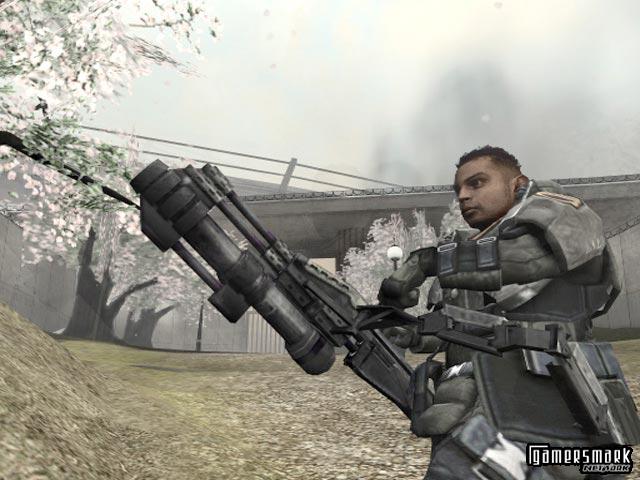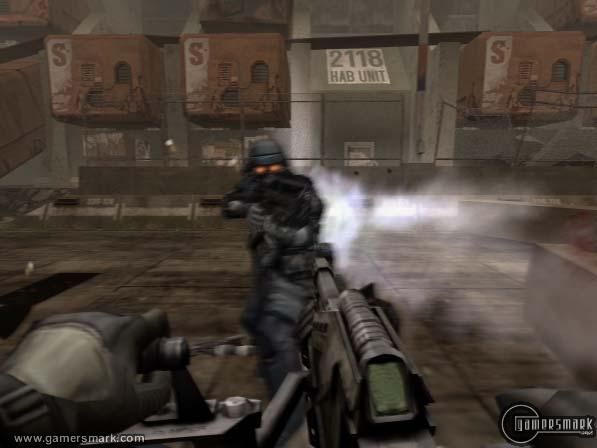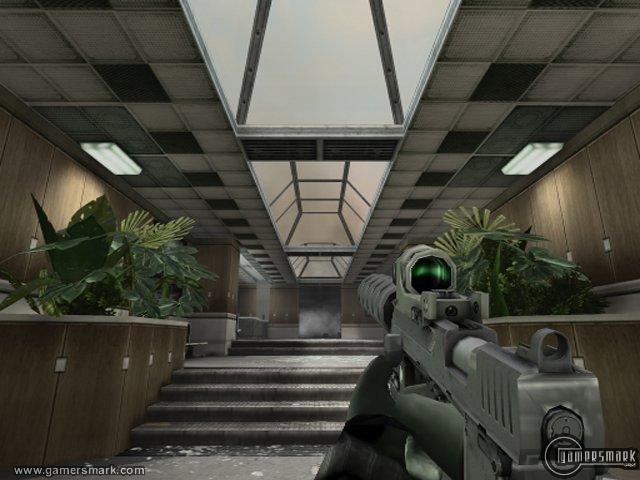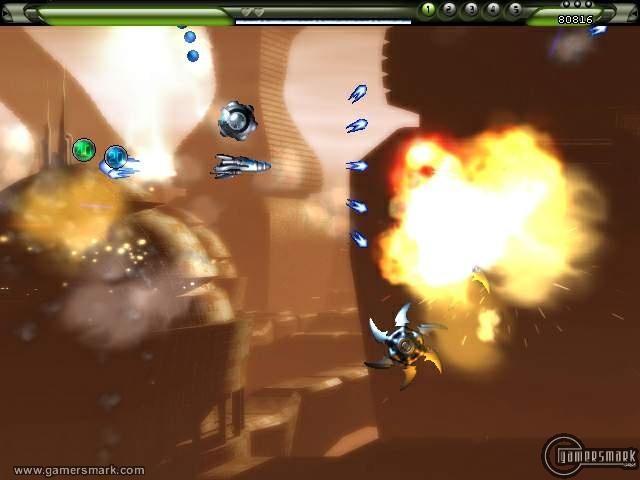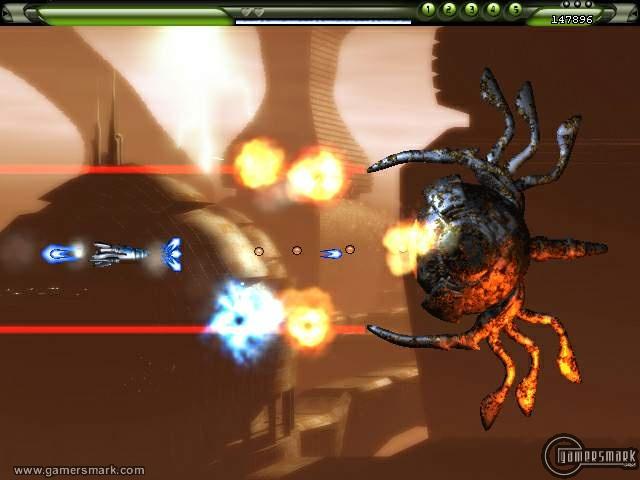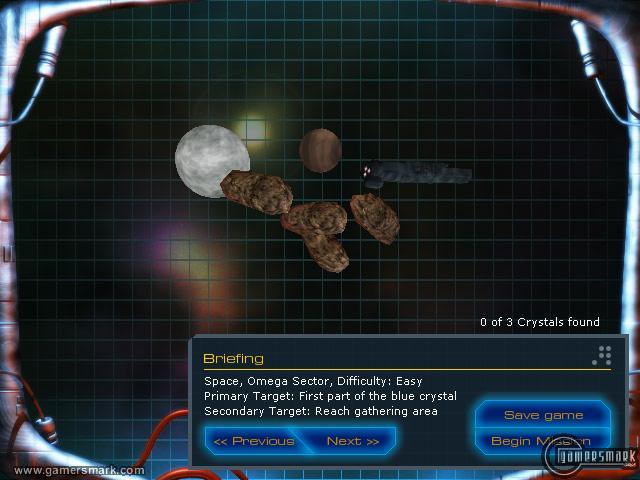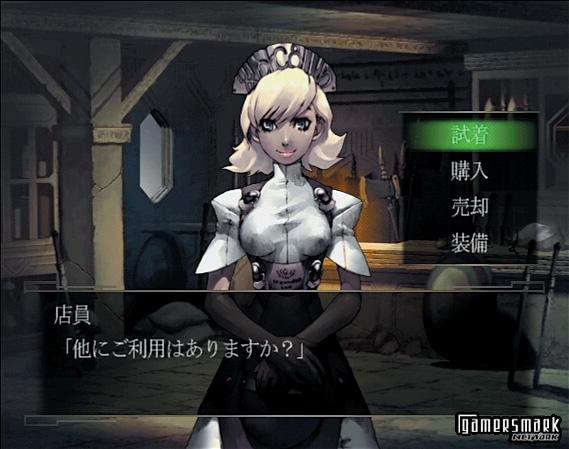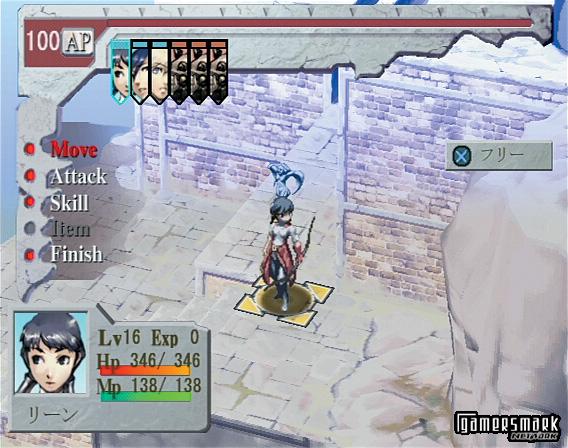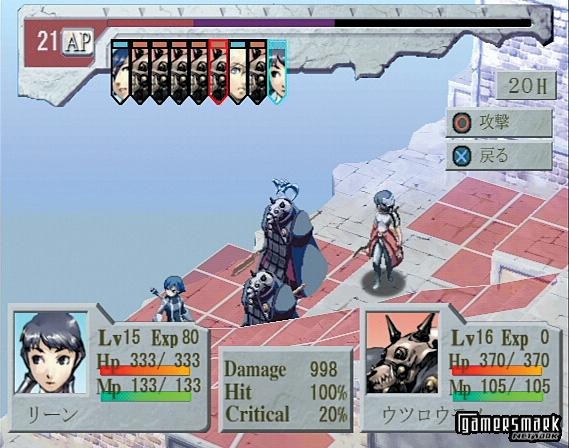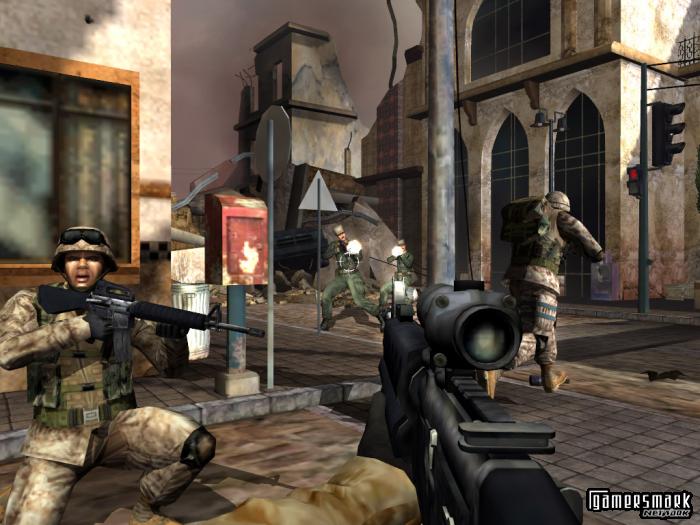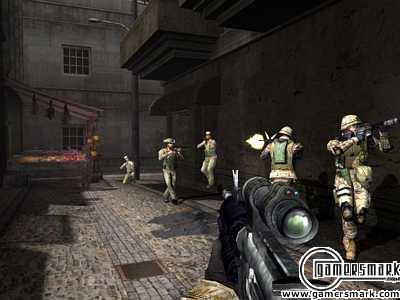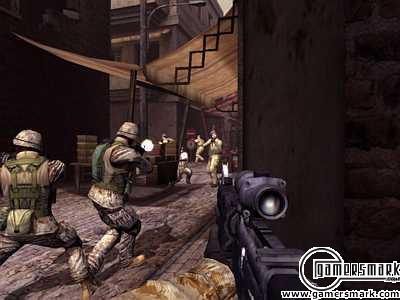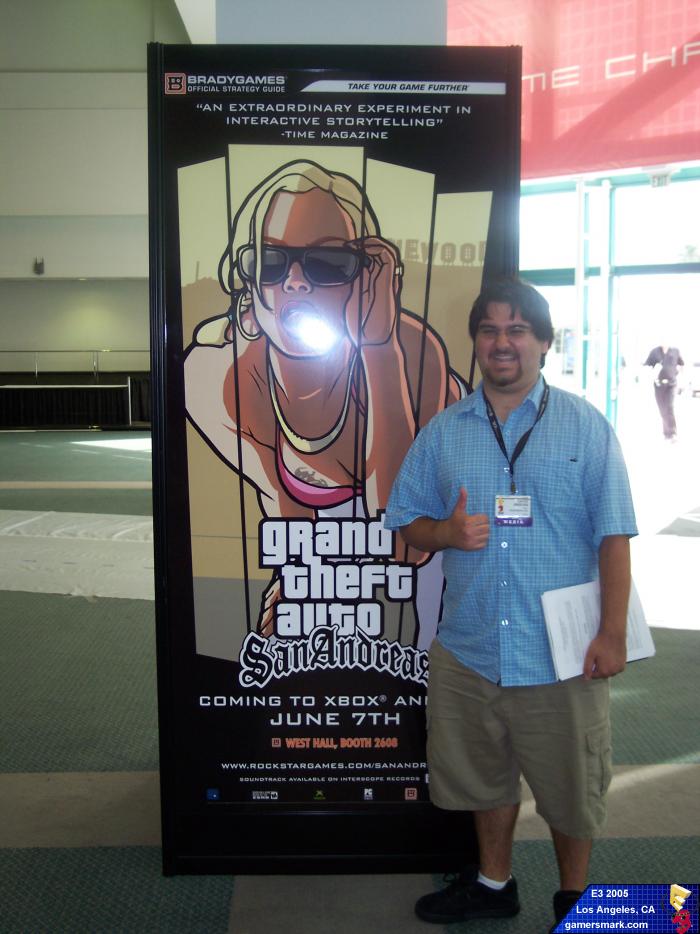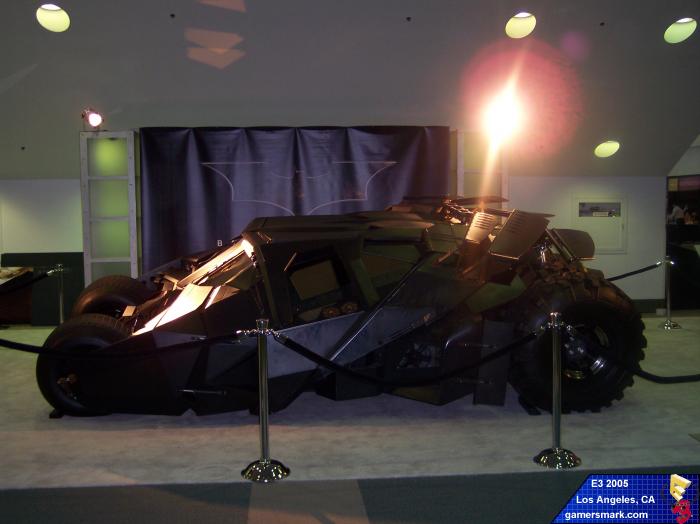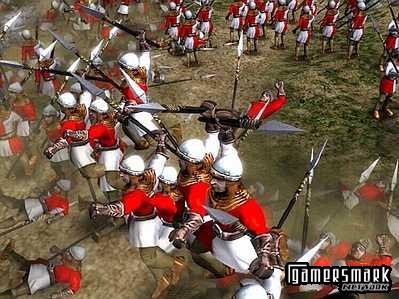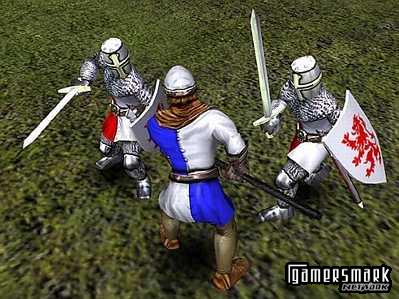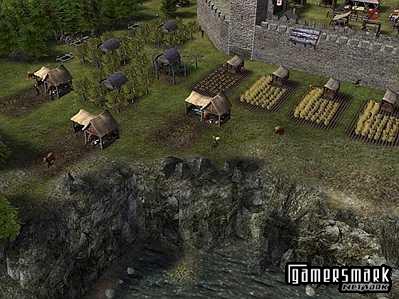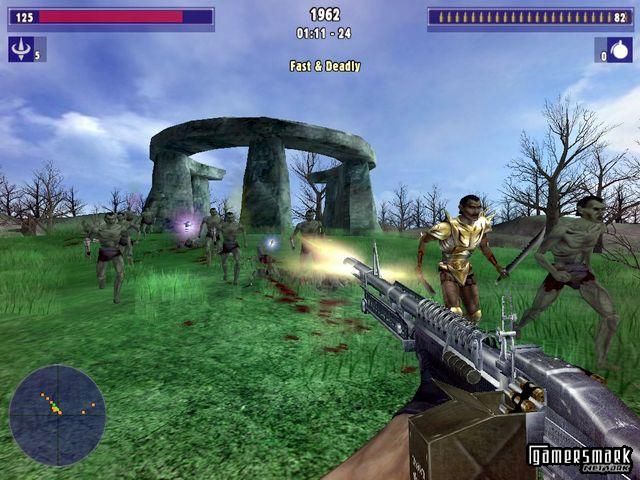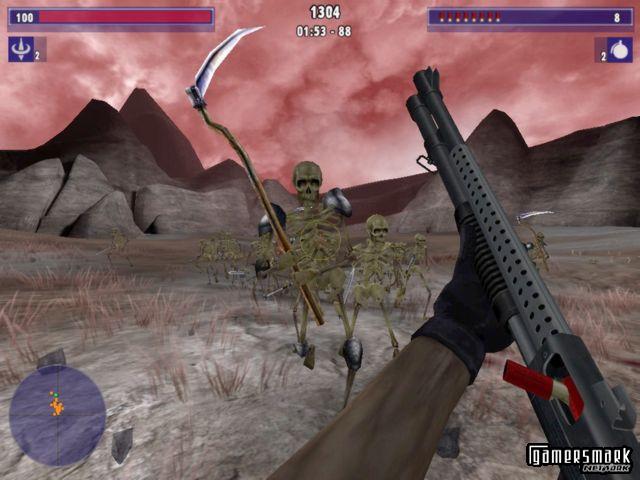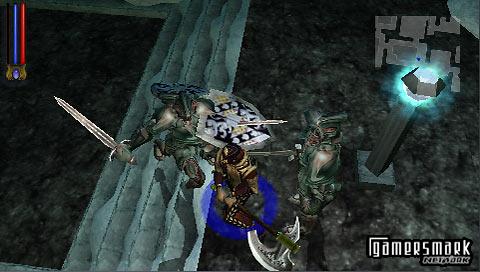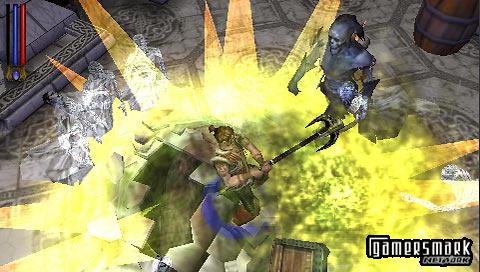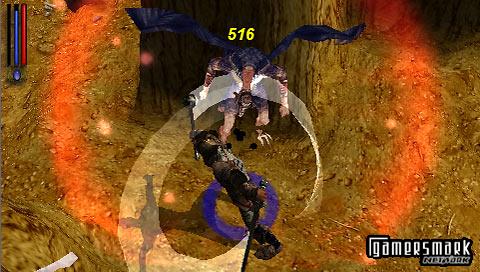Developer: Guerilla Games / Publisher: Sony Computer Entertainment || Overall: 8.8/10
Killzone, known to some as the “Halo-killer,” for the PS2 is a first-person shooter (FPS) that aims to fill a large gap in the amount of games in its genre for Sony’s current console, the PS2. It isn’t too often that an FPS for PS2 comes along, let alone one that can compete with games such as Halo and Halo 2 on the Xbox. While Killzone didn’t do as well in sales or overall ratings by critics to live up to the name of “Halo-killer,” Killzone is still an impressive FPS that does what it sets out to do very well: allow you to shoot enemies and have fun at it. On its own merits, Killzone is probably the best FPS on the PS2, rivaled only by Red Faction.
Probably the thing that is thought about most when the name “Killzone” is mentioned is the graphics. Especially since the tech demo for Killzone PS3, the name Killzone has sparked a lot of interest. With that said the graphics in Killzone for the PS2 are very impressive, especially for a PS2 game. However, you might not get this feeling until later in the game when you see the different environments you venture through. Part of what makes the graphics in Killzone so nice is the cool reloading animations, the sprinting animation (which looks as good as a CG movie with the effects used), and the faces of characters that look practically realistic, among other things. Faces show emotions and change face patters during cutscenes, adding to the realism of the game. In-game, the faces look just about as good, but don’t really move as much as during a cutscene. Other than that, there isn’t really much you can point out in saying “that looked really good,” because Killzone focuses more on an overall visual experience that comes off very nicely. The colors used in the game usually revolve a lot around browns and grays, and the video quality effect (at least I hope it is an intentional effect) used makes it seem like it’s a futuristic-looking atmosphere.
The campaign’s story is fairly interesting. The story starts when a group of invading sub-humans named the Helghast from the planet Helghan attack the ruling human faction, the ISA. The Helghast were a group of humans whom settled on a planet with very harsh conditions, like breathing in heavy gasses, resulting in an evolved sub-race. They did what any separated groups of humans do when they think badly about the current government; they nationalized, and declared war on their former relatives. The emphasis on the story is on a smaller scope, however. Rather than concentrating on the whole war, it focuses on a major conflict on one of the planets that was pre-emptively stricken by the Helghast in which a Space Defense satellite is taken over by a traitorous general in charge of it. The four main playable characters that you can play with in the campaign are Templar, Luger, Rico, and Hakha. All the characters in the game are voiced very well, really giving personality to the main characters in the story. However, non-cutscene voice work isn’t as charming. Most of the sounds used by characters are usually the same ones being heard over and over, making it feel as if the in-game voice sound effects were shortchanged when it came to its variety. You’ll often hear commands from your party members that don’t make sense toward the immediate situation, having to take what they say with a grain of salt. The actual character’s characterization is fairly vague, and while you don’t exactly know who the main characters really are (in terms of their personal histories) their personalities really shine through in the voice-overs. Through the story, you will learn small portions of a character’s past, most not being explained thoroughly at all by the end of the campaign. I guess you just have to fill in the blanks when it comes to the things they didn’t explain. On a side note, there are swear words used somewhat freely in the game, which adds to the reality of the intense situation being portrayed. Not much music is actually in the game except for cutscenes, but it isn’t something that is missed during regular game play, because there’ll be a lot of shooting and you’ll want to hear every gunshot you can so you know where it’s coming from.
The campaign takes a while to complete, and obviously leaves it open-ended for a sequel. Whether or not any sequels for the game will have the characters introduced in Killzone is sort of hinted at, but it is certainly left to question whether or not they will make an appearance again. When beginning a mission, you’re allowed to pick a character to use. Each character has a perk or two that will make playing with them a somewhat unique experience. Choosing a different character changes some things in the missions you play, but the biggest difference is in the main weapon they use. Regardless of which character you choose, you’re able to hold three weapons for use through the mission. At the end of each mission, your weapons reset to the default weaponry for your character, but you keep the weapons you have until you complete a mission. While the guns you find on the floor aren’t of a very wide variety, there are quite a few different kinds of guns that will be used through the game. Some guns have alternate fire, but some don’t. Alternate fire usually takes a longer time to use due to having to usually reload right after its use, but it depends on what weapon you’re using, of course. Because ammo for your default weaponry is hard to come by, you’ll be using your enemy’s weaponry, allowing you to keep bullets being fed into your stockpile.
The typical mission is divided up into three parts. Eleven missions are included in the campaign mode, and each one is pretty long. In the end, it does give a satisfying amount of play time. Interestingly enough, it says on the time counter that I’ve been playing for nearly fifty hours, but it really didn’t feel like it. Either way, you’ll be playing for a pretty long time. The typical mission isn’t extremely imaginative, but the tactics you have to use during each of the different parts make the game interesting enough for you to have a good time playing. The game also forces you to be a little tactical in how you go about attacking a situation, often times having to die and try again. But really, the game doesn’t get all that fun until a third of the way through when the story really gets going. Most of the enemies you encounter will either charge you head on, wait for you to come, or pop out of nowhere and shoot at you. It’s basically normal FPS stuff, so it’s nothing that hasn’t been seen before. The missions do become challenging at times though. Even on easy, you can have a hard time, taking two or three tries at a certain situation before you can get through it alive. The main challenge in it though is because checkpoints (where you resume the game after you die) are few and far between, making you go back to a farther-than-needed point in the mission and making you do the same things you had just gone through until you get to the point you had trouble at. All of this takes a bit of chance, skill, and frustration to complete and can get redundant because you play through parts you’ve already completed again. There are enough unique challenges to confront throughout missions to keep the interest fountain flowing, though you just might have to take a little rest between tries.
There are a few minor annoyances found through the game. Only a couple times have I had the frame rate decrease below thirty frames per second, and that was because there was a lot of action going on at the same time. Most of the game runs very well though. Also, it gets sort of annoying going up and down ladders. Sometimes when you want to get on a ladder and then press a direction to go, you’ll get off the ladder instead of going where you want to go. Whether it’s a bug or a control issue, I’m not sure. Thankfully ladders aren’t a big part of the game; they only take importance in a couple of places.
Adding to the game’s difficulty is actually taking doing Helghast, because they are very hard to kill at times. You could get a few headshots on a certain Helghast and they still wouldn’t go down. It can take a lot more ammo than what would really be worth it in the long distance firefights, mostly because the weaponry you have isn’t usually good at long distance (unless you just happen to have a sniper rifle handy). As the game goes on, the Helghast become harder and harder to kill, and use bigger guns and grenade launchers in more frequency rather than only using the basic Helghast gun most Helghast you encounter will have.
There’s a nice multiplayer mode that allows for single player games offline playing with bots. Online is also supported for the multiplayer mode. There are all of your usual FPS multiplayer games such as Deathmatch, Team Deathmatch, Assault, and a couple of others. The multiplayer arenas are mimicked after certain parts of the campaign. The online multiplayer mode definitely extends the life of the title, and the fairly-realistic-yet-futuristic weaponry used in the game does have a little bit of an appeal to it. No vehicles can be used at all in the game, though.
There isn’t that much that is bad about Killzone. Being a more traditional FPS, focusing more on actual shooting game play rather than vehicle game play, Killzone sets up a very cool universe for which subsequent games may take place in. I, for one, am definitely looking forward to more installments in what will happen in the war between the ISA and Helghast.

